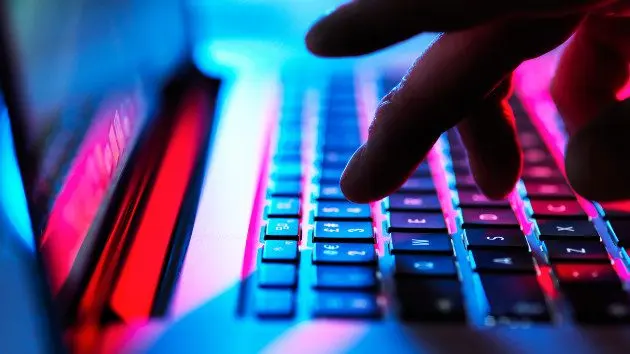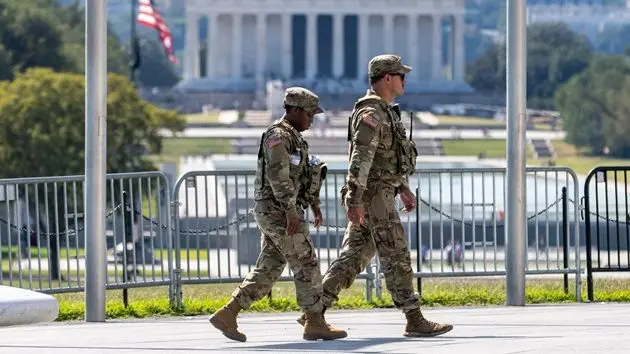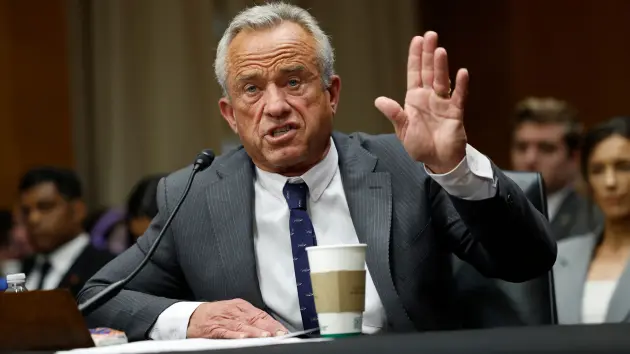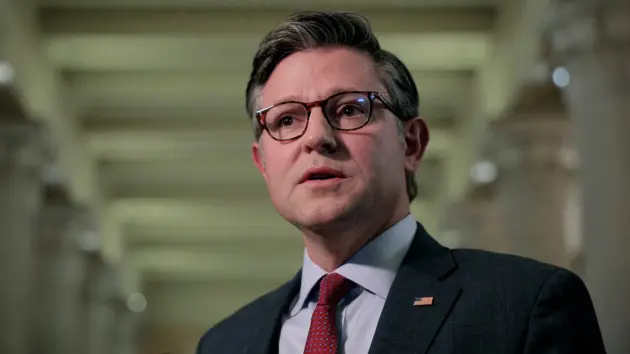(NEW YORK) — Many parents, school districts and the federal government alike have embraced artificial intelligence this back-to-school season, but some experts warn artificial intelligence could widen the teacher shortage by eliminating jobs.
In a Pew Research Center study released last spring, 31% of AI experts, whose work or research focuses on the topic, said they expected artificial intelligence to lead to fewer jobs for teachers. Nearly a third of the experts surveyed predicted that AI will place teaching jobs “at risk” over the next 20 years, according to they Pew Research study.
The warning comes after the Learning Policy Institute — an organization that conducts independent research to improve education and policy practices — in July issued an overview of teacher shortages, which estimated that about one in eight teaching positions in 2025 are either unfilled or filled by teachers not fully certified for their assignments.
Indiana’s 2024 Teacher of the Year Eric Jenkins suggested AI could end up replacing “some parts” of teaching, but as a tool — not a replacement.
Idaho Superintendent of Public Instruction Debbie Critchfield emphasized that using AI to address the long-standing staffing shortage shouldn’t be considered.
“In no universe do I think that AI is going to replace a teacher,” Critchfield told ABC News.
“The teacher is the most important part and component of the classroom, but [AI] is a very useful tool in helping them provide the best educational environment that they can in the classroom,” she said.
The White House encourages K-12 students to use AI. While the Trump administration hasn’t directly addressed whether AI could replace teachers, the administration has launched its own action plan on the technology, which says “AI will improve the lives of Americans by complementing their work — not replacing it.”
Last week, first lady Melania Trump launched an AI contest challenging students to develop projects that use AI to address community challenges. Education Secretary Linda McMahon endorsed the challenge.
“AI has the potential to revolutionize education, drive meaningful learning outcomes, and prepare students for tomorrow’s challenges,” McMahon wrote in a post on X.
Teachers say they offer what AI can’t: connection
Nearly three years after the launch of ChatGPT, which stands for Chat Generative Pre-Trained Transformer, most of the United States has developed guidance on AI use in schools.
Many districts tell ABC News that they are embracing the technology so long as it is used appropriately — by adhering to local education agency guidance — with academic integrity. Critchfield even downplayed concerns that AI use in schools encourages cheating.
“Teachers can tell if you were writing like a seventh grader on Wednesday and then, all of a sudden, your paper you turn in on a Friday sounds like your post-doctorate in philosophy,” she said. “They know how to tell those differences.”
But in the wake of the pandemic, Thomas Toch, the director of FutureEd — an education policy center at Georgetown University, argued students need connection — to their peers, family and education tools such as AI chatbots — more than ever. Still, Toch rejected the full-time use of AI in place of humans.
“The loss of that connection during the pandemic, when kids were learning virtually, created widespread mental-health challenges,” Toch told ABC News. “The notion that, you know, a machine will be the only entity that interacts with kids is problematic in that regard.”
Education experts, such as Toch, contend K-12 education has “perpetual” teacher shortages with about a half-dozen areas in need, such as science, technology, engineering and mathematics (STEM), and special education instructors. The shortages have plagued the workforce for many years now, educators have told ABC News, with many of them citing strict time demands, persistent behavioral issues and lack of administrative support, among other obstacles.
Toch and Jenkins told ABC News they both appreciate AI for the powerful tool it can be in assisting teachers. It helps teachers plan lessons, grade students’ essays and is used as a “time saver” that helps them do their jobs better, according to Toch.
Preparing educators to work with AI tools
Jenkins said AI is inevitable and that he believes teachers need to lean in and embrace its capabilities.
“I don’t think we can put our head in the sand about it,” Jenkins told ABC News. “I don’t think that it’s necessarily going to replace teachers because teachers can offer something that AI can’t, which is a connection, like authentic connection and community.”
Jenkins argued the chatbots lack the human element of what teachers do: making sure that students feel seen and heard. He said that is not going away.
With AI’s presence in education, Jenkins added, “it’s going to make those moments even more important.”
In Idaho, Critchfield said she has been excited about students and educators using the technology, but suggested the challenge ahead focuses on making AI be seen as a tool and not a negative. According to Critchfield, using AI wisely can aid in the shortage by increasing teacher retention and reducing educators’ workloads.
“How are we preparing and training our teachers to use [AI] so that we don’t add new problems as we’re trying to solve some other problems?” Critchfield said.
Ultimately, Critchfield said she doesn’t see AI as a boogeyman that is going to eliminate jobs, but she stressed that teachers who know AI could replace those who are less familiar with the technology.
After teachers in his district suggested banning ChatGPT just a few years ago, School District of Philadelphia Superintendent Tony Watlington told ABC News that instead of removing AI, Philadelphia is now learning from it together. The school district is implementing AI 101 Training for its teachers, school leaders, and superintendent through a partnership with the University of Pennsylvania’s Graduate School of Education.
Watlington said it’s about “getting people around the table, and we are learning together.”
“We’re not hiding from AI,” Watlington said. “We’re also thinking about its implications and we’re really paying attention to what the prospective unintended consequences could be as well.”
Watlington added: “I think that’s the responsible way to think about artificial intelligence.”
Copyright © 2025, ABC Audio. All rights reserved.






